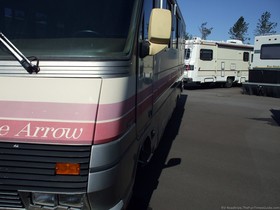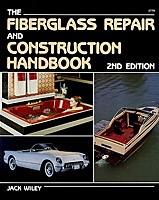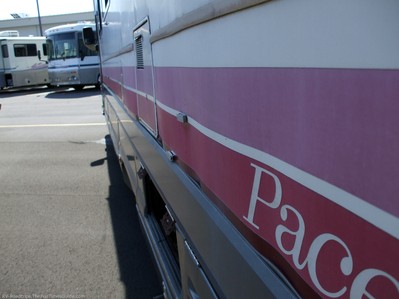 About 20 years ago, a new method of RV construction came on the market: smooth fiberglass exterior walls constructed by sandwiching an outer skin of smooth fiberglass with the frame structure and Styrofoam or fiberglass insulation in the middle and the interior wall paneling on the interior.
About 20 years ago, a new method of RV construction came on the market: smooth fiberglass exterior walls constructed by sandwiching an outer skin of smooth fiberglass with the frame structure and Styrofoam or fiberglass insulation in the middle and the interior wall paneling on the interior.
With adhesive between the different layers, it was intended to create a bonded single unit wall panel that greatly decreased the labor involved with building an RV.
An additional benefit was the fact that the new sidewalls had better aerodynamics. Plus, the new smooth look improved the sale of RVs from trailers to motorhomes.
As with many new methods it all looked real good in the beginning. But soon, a few bugs came to the surface. After a few years, some of the early models started having problems with the ply’s or layers of the wall structure starting to come apart (or delaminate).
What To Look For
The first evidence of a delamination problem is bubbles (or blisters) forming on the sidewalls as the luan plywood under the outer fiberglass layer breaks down, allowing it to pull away from the wall structure.
Delamination is generally caused by moisture infiltrating the wall and destroying the integrity of the luan plywood.
Flexing in the wall structure can also lead to the adhesive failing or cracks developing. Cracks are another similar issue that will rapidly send the value of your investment plummeting.
Speaking From Experience
I had a 1993 Winnebago motorhome that had a crack develop as I was preparing for a trip from Minnesota to Arizona one February. The crack ran from the corner of the kitchen window at an angle down toward an access panel.
An older Class C mini-home I once owned also had cracks at both lower corners of the window in the center of the back wall.
Here’s the bad news. Both delamination and cracks are very expensive and sometimes impossible to properly repair unless the complete sidewall of the unit is removed and replaced.
How To Fix Cracks & Delamination Problems
Some body shops suggest that by cutting out the affected area of outer fiberglass and removing the damaged luan plywood, you can then replace the plywood with new substructure and re-glue the fiberglass panel back in place. The finished repair will surly be visible unless masqueraded with a large decal.
 I tried fiberglass patches, layering a couple strips of new fiberglass over the crack and smoothing with Bondo. Within the first day of driving, the cracks reappeared — going right through the new fiberglass. Both attempts to make cost-effective repairs failed quickly.
I tried fiberglass patches, layering a couple strips of new fiberglass over the crack and smoothing with Bondo. Within the first day of driving, the cracks reappeared — going right through the new fiberglass. Both attempts to make cost-effective repairs failed quickly.
I was lucky. Under a special warranty program, the Winnebago factory covered the cost of my sidewall replacement for that particular RV.. The cracking situation I experienced was determined to be a design problem, and they stood behind their product.
Buyer Beware: If You Spot Delamination Or Cracks
Over the years, I’ve seen many RVs that have delamination issues that just continue to get worse.
This should be a huge red flag if you’re shopping for a used RV of any make or model.
If you detect any area where you feel the fiberglass has pulled away from the inner structure, just pass that RV by.
In some instances structural integrity of the whole RV has been compromised. The wall skin supplies some of the strength of the entire wall. Picture it like your house without the outer skin being attached to the studs. The house would be weakened to the point of collapse.
The cost of replacing a sidewall would likely surpass the total value of the entire RV. As the delamination gets worse — and it will — the value of your investment will slide downhill rapidly.
Unless you’ve managed to secure a deal good enough that you can overlook the damage, the best choice is to look at a different RV.
Resale value will be drastically reduced in the future. Not many people will be interested in buying an RV that suffers from terminal delamination.




